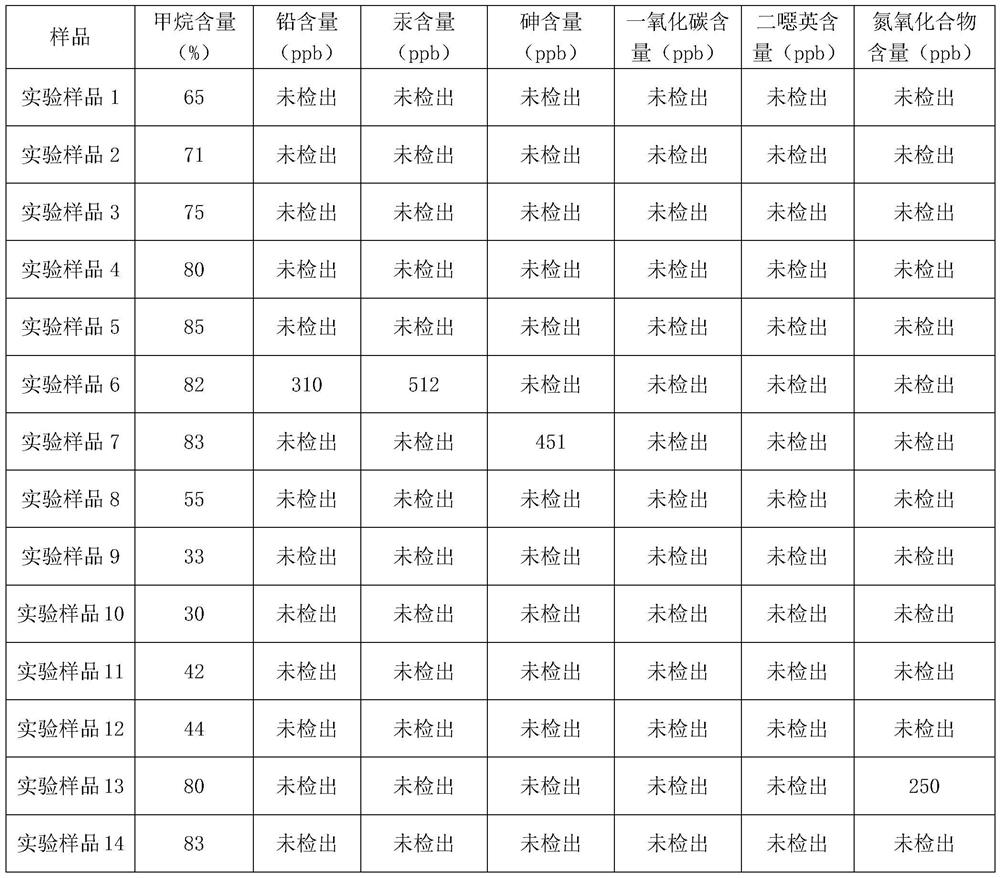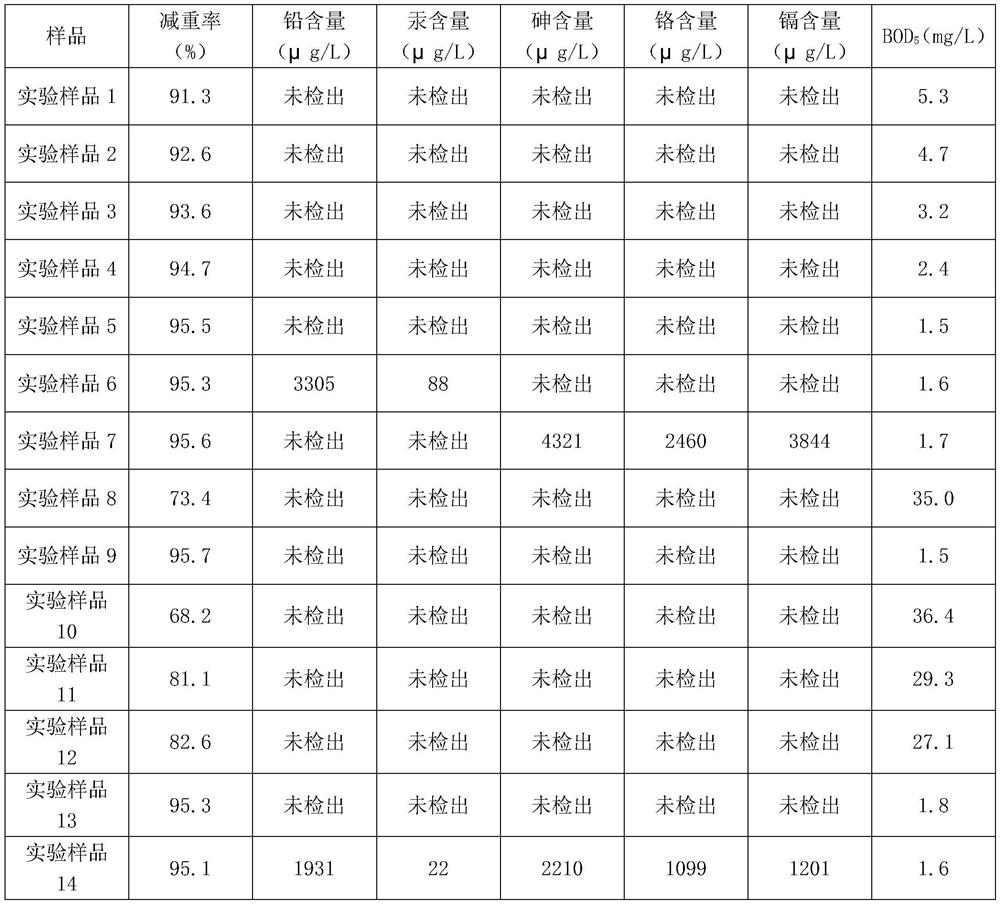A microwave treatment method for chemical waste
A microwave treatment and chemical technology, applied in the direction of waste fuel, gas fuel, petroleum industry, etc., to achieve the effect of controllable parameters and stable process
- Summary
- Abstract
- Description
- Claims
- Application Information
AI Technical Summary
Problems solved by technology
Method used
Image
Examples
Embodiment 1
[0036] A microwave treatment method for chemical waste, comprising the following steps:
[0037] a. According to the weight ratio, take 150 parts of chemical waste and pass it into the reduction pool, add 12 parts of catechin, 5 parts of hydroxylamine hydrochloride, and 5 parts of sodium citrate, mix well, let it stand for 10 hours, and then add nitrilo After 13 parts of sodium triacetate were mixed uniformly, the reaction was continued for 18 hours to obtain the reduced product;
[0038] b. Pass the reduced product into the oxidation tank, add 10 parts of the hydrogen peroxide oxidation residue, mix well and let it stand for 8 hours to react, then add 6 parts of chlorophyll and 7 parts of 8-hydroxyquinoline and mix evenly, continue to stand for 13 hours , to obtain a chelated mixture;
[0039] c. Put the chelation mixture into the microwave cracking furnace, feed in the methane and raise the temperature to 75°C, keep it warm for 45 minutes, then add nitric acid waste liquid,...
Embodiment 2
[0045] A microwave treatment method for chemical waste, comprising the following steps:
[0046] a. According to the weight ratio, take 350 parts of chemical waste and pass it into the reduction pool, add 26 parts of catechin, 15 parts of hydroxylamine hydrochloride, and 13 parts of sodium citrate, mix well, let it stand for 20 hours, and then add nitrilo After 25 parts of sodium triacetate were mixed uniformly, the reaction was continued for 26 hours to obtain the reduced product;
[0047] b. Pass the reduced product into the oxidation tank, add 20 parts of the hydrogen peroxide oxidation residue, mix well and let it stand for 20 hours to react, then add 16 parts of chlorophyll and 19 parts of 8-hydroxyquinoline and mix evenly, continue to stand for 25 hours to react , to obtain a chelated mixture;
[0048] c. Put the chelation mixture into the microwave cracking furnace, feed in the biogas and raise the temperature to 85°C, keep it warm for 65 minutes, then add nitric acid ...
Embodiment 3
[0054] A microwave treatment method for chemical waste, comprising the following steps:
[0055] a. According to the weight ratio, take 200 parts of chemical waste and pass it into the reduction pool, add 15.5 parts of catechin, 7 parts of hydroxylamine hydrochloride, and 7 parts of sodium citrate, mix well, let it stand for 12 hours, and then add nitrilo After 16 parts of sodium triacetate were mixed uniformly, the reaction was continued for 20 hours to obtain the reduced product;
[0056] b. Pass the reduced product into the oxidation pool, add 13 parts of hydrogen peroxide oxidation raffinate, mix evenly and let stand for reaction for 11 hours, then add 8.5 parts of chlorophyll, 10 parts of 8-hydroxyquinoline and mix evenly, continue to stand for 16 hours for reaction , to obtain a chelated mixture;
[0057] c. Put the chelation mixture into the microwave cracking furnace, feed in the methane and raise the temperature to 77°C, keep it warm for 50 minutes, then add nitric a...
PUM
 Login to View More
Login to View More Abstract
Description
Claims
Application Information
 Login to View More
Login to View More - R&D
- Intellectual Property
- Life Sciences
- Materials
- Tech Scout
- Unparalleled Data Quality
- Higher Quality Content
- 60% Fewer Hallucinations
Browse by: Latest US Patents, China's latest patents, Technical Efficacy Thesaurus, Application Domain, Technology Topic, Popular Technical Reports.
© 2025 PatSnap. All rights reserved.Legal|Privacy policy|Modern Slavery Act Transparency Statement|Sitemap|About US| Contact US: help@patsnap.com


